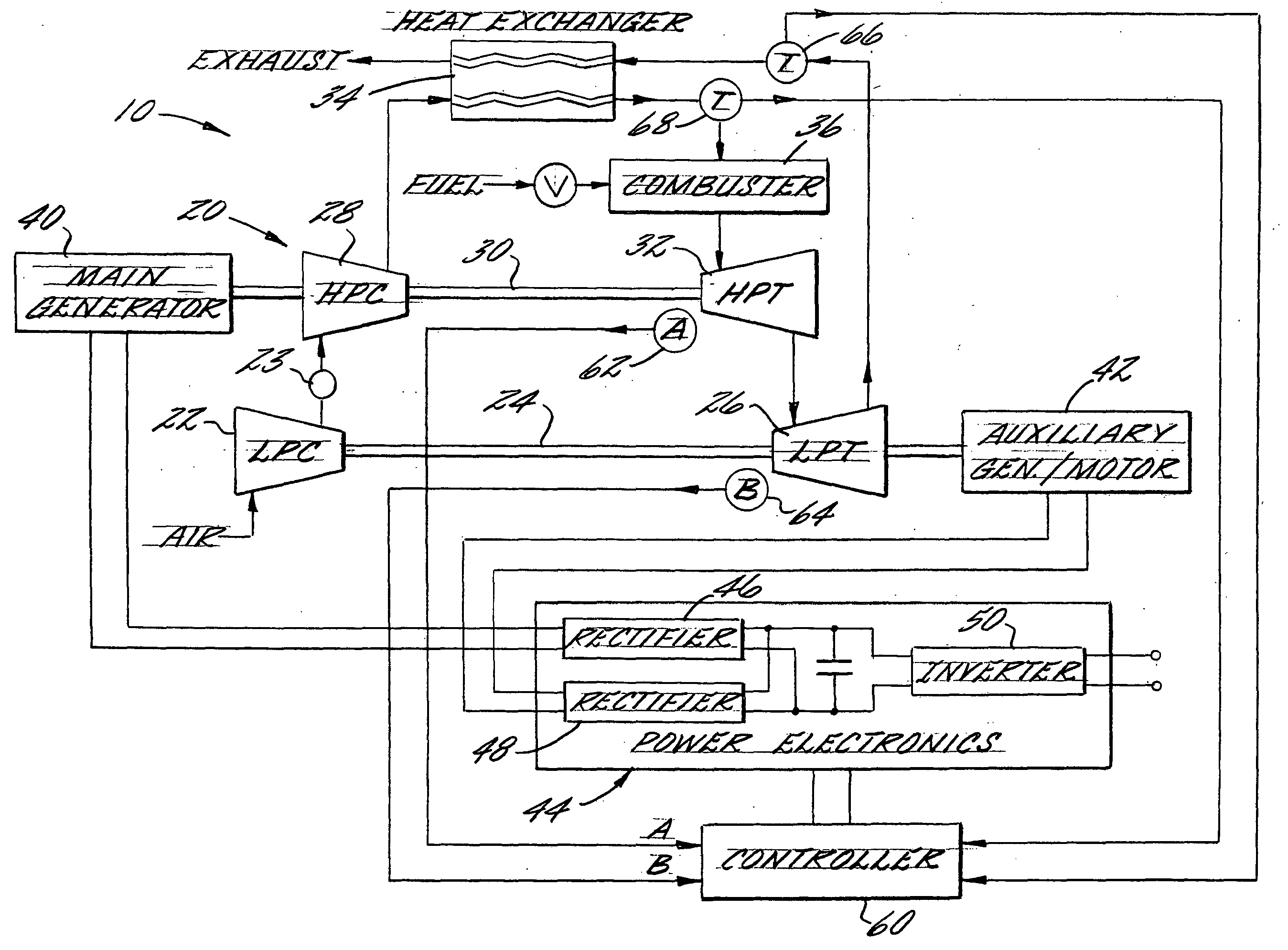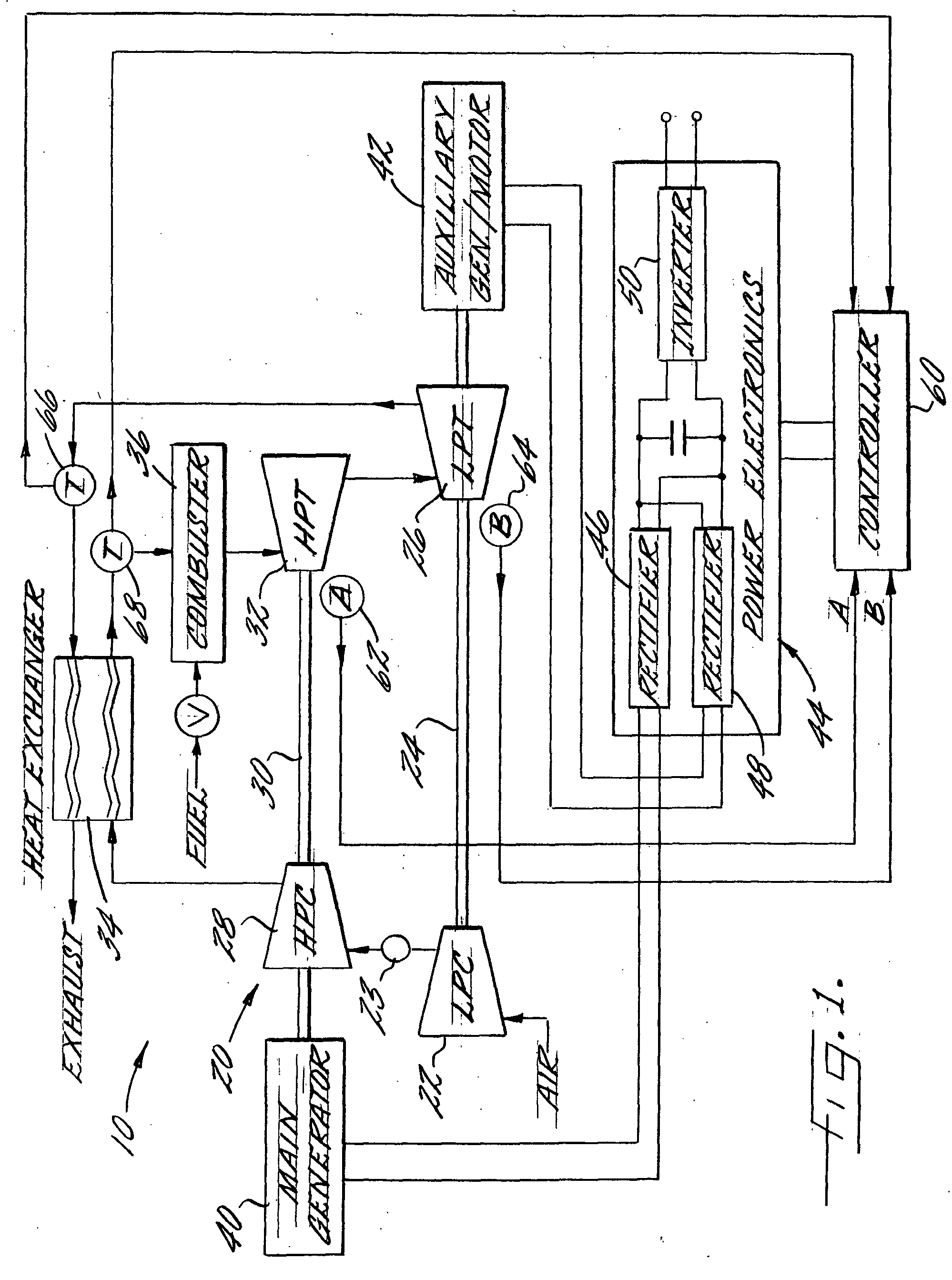Multi-spool turbogenerator system and control method
a turbogenerator and multi-spool technology, applied in the direction of machines/engines, mechanical equipment, lighting and heating apparatus, etc., can solve the problems of inability to achieve widespread deployment of distributed generation systems, failure of distributed generation to achieve widespread deployment, and relatively high cost of power from distributed generation systems, and achieve the effect of reducing the need for variable-geometry mechanisms, minimizing or eliminating the need for pre-burners, and substantially optimizing engine efficiency
- Summary
- Abstract
- Description
- Claims
- Application Information
AI Technical Summary
Benefits of technology
Problems solved by technology
Method used
Image
Examples
Embodiment Construction
[0036] The present inventions now will be described more fully hereinafter with reference to the accompanying drawings, in which some, but not all embodiments of the invention are shown. Indeed, these inventions may be embodied in many different forms and should not be construed as limited to the embodiments set forth herein; rather, these embodiments are provided so that this disclosure will satisfy applicable legal requirements. Like numbers refer to like elements throughout.
[0037] An electrical generator system 10 in accordance with one embodiment of the invention is schematically shown in FIG. 1. The system includes a gas turbine engine 20 that burns a mixture of fuel and air to produce hot combustion gases that are then expanded to create mechanical power. In the illustrated embodiment, the turbine engine includes a low-pressure spool and a high-pressure spool. The low-pressure spool comprises a low-pressure compressor 22 mounted on one end of a rotatable shaft 24 and a low-pr...
PUM
 Login to View More
Login to View More Abstract
Description
Claims
Application Information
 Login to View More
Login to View More - R&D
- Intellectual Property
- Life Sciences
- Materials
- Tech Scout
- Unparalleled Data Quality
- Higher Quality Content
- 60% Fewer Hallucinations
Browse by: Latest US Patents, China's latest patents, Technical Efficacy Thesaurus, Application Domain, Technology Topic, Popular Technical Reports.
© 2025 PatSnap. All rights reserved.Legal|Privacy policy|Modern Slavery Act Transparency Statement|Sitemap|About US| Contact US: help@patsnap.com



